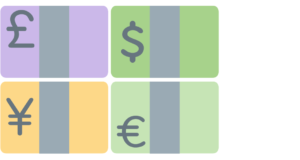Global equities markets saw moderate gains in the quarter of April and June.
The MSCI World Index ex-Australia (hedged into AUD) returned 3.1% for the quarter. Unhedged returns were also positive at 0.4%. Most countries within the Developed Markets Index saw gains, led by Portugal and Austria. France was the weakest performer (-6.3%). Meanwhile, the MSCI Emerging Markets Index (unhedged into AUD) returned 2.6% over the quarter.

USA
US equities performed well, with the S&P 500 returning 4.2%. Performance was driven by the Information Technology and Communication Services sectors. Enthusiasm around AI continued to boost companies linked to AI, which reported optimistic earnings outlooks.
On the other hand, the Materials and Industrials sectors underperformed. Annual US inflation eased. Jobs growth pointed towards labour market strength and a resilient economy.

Europe
Eurozone equities declined by -1.3% in the April-June quarter. Uncertainty around the announcement of French elections and the reduced likelihood of interest rate cuts influenced this decline. The Information Technology sector, particularly semiconductor-related stocks, performed well. The Consumer Discretionary sector declined due to weakness in automotive and luxury goods stocks.
Interest rates were cut by the European Central Bank by 25 basis points in early June. Further cuts may be limited by persistent inflation.

Asia
Asian equities (excluding Japan) gained 4.8% in the April-June quarter. Taiwan and India were the best-performing markets in the MSCI All Countries Asia ex-Japan Index.
Taiwan was the best performing market for the quarter and year-to-date, driven by optimism for AI-related stocks. Positive investor sentiment in India drove robust growth in equities in the Indian market. Chinese equities gained as low valuations attracted Asia-focused investors back to the market, despite ongoing weak consumer sentiment and economic activity.

Australia
The S&P/ASX 300 Index returned -1.2% for the quarter. Utilities (+13.3%) and Financials (+4.0%) were the best performers, while the Energy sector was the weakest (-6.7%). The Reserve Bank of Australia maintained the cash rate at 4.35%. The RBA also adopted a more forceful stance, indicating the possibility of future interest rate increases.

Currency and bonds
Yields on major Developed Market bonds generally increased, reflecting adjustments in policy rate expectations. Over the quarter, the 10-year Australian bond yield rose by 34 basis points to 4.31%, while the US 10-year yield increased by 17 basis points to 4.37%.
In currency markets, the AUD strengthened against most major currencies, including increases against:
- the Japanese Yen (+8.8%)
- the USD (+2.4%)
- the Euro (+3.2%)
- the NZ dollar (+0.5%)

